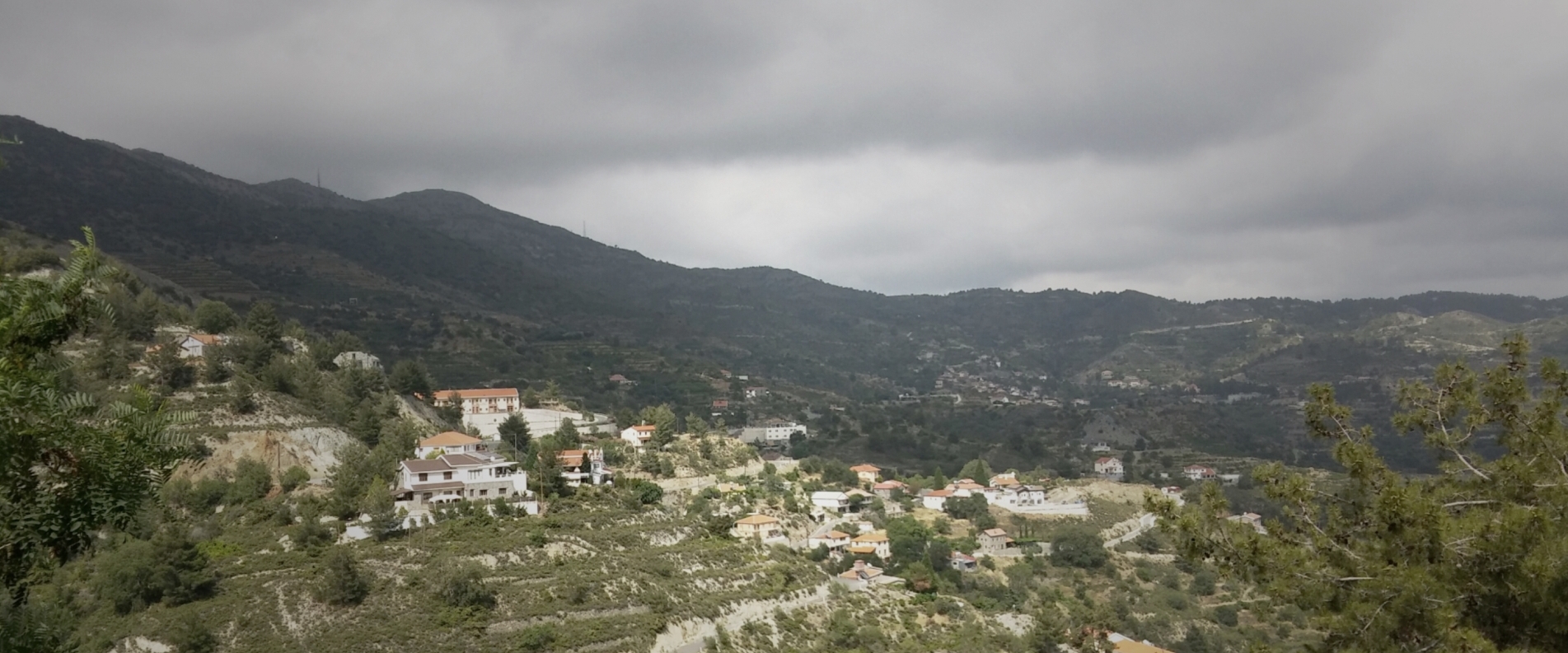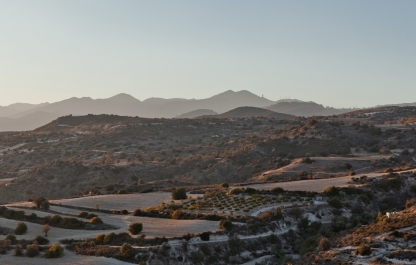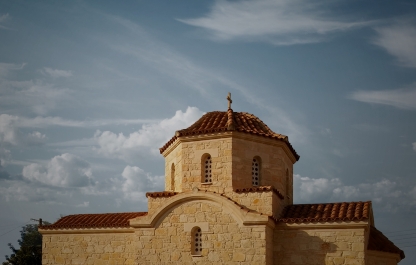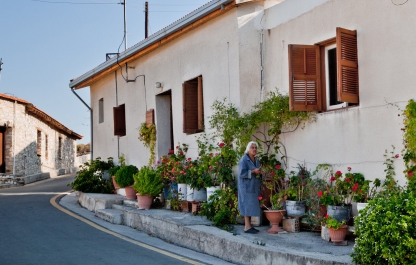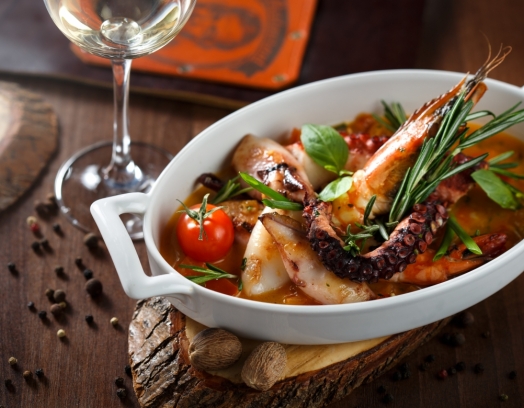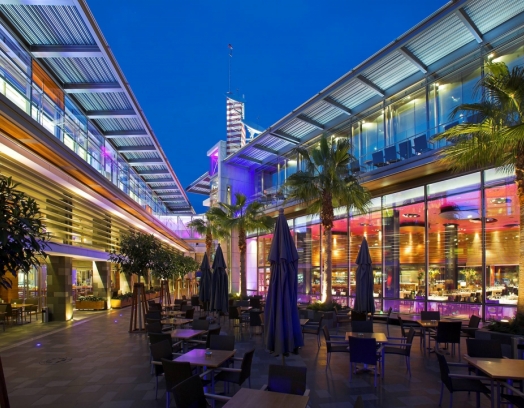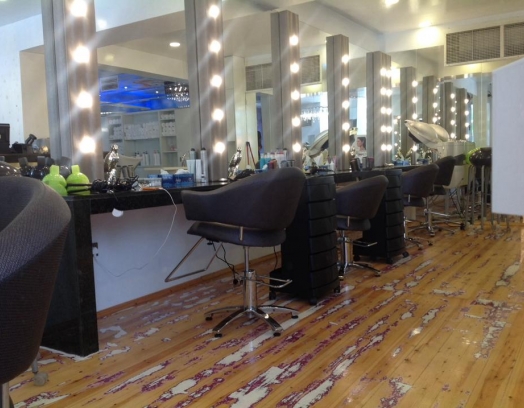We are continuing our trip inspired by the beauty of this province.
As you know, recently we have visited two villages called Spilia and Kourdali that share both geographical location and historical background. Today we are heading to their “neighbour” Kyperounta village.
According to the handbooks Kyperounta village is one of the biggest settlements with the traditional life-style in the Cyprus highlands. The village is located in the mountains of the Limassol district at a height of 1300 m above the sea level. The present population of Kyperounta is estimated to be about 1500 persons.
The settlement was established at time Cyprus was a part of Byzantium Empire. It’s generally believed that the village got its name after kyperi (sedge in Greek) — the plant that was widespread in this region.
So we were zigzagging on the serpentine between the villages to reach Kyperounta. And now we are here. You feel excited by the first step you take on the streets of this spacious village or even a small town.
Both the landscape and the houses are not of those typical kind you are used to see everywhere in Cyprus. That’s way the atmosphere is very unusual here, similar to those rich recreational areas they often show you in movies. For a second you might actually feel like you had been magically transported to the popular Alpine resort; the large mansions and villas covered with blossoming gardens and surrounded by well-groomed lawns resemble French and Austrian chalets. Its cozy small streets run up in the different sides like a springs flowing from the wide rivers of modern avenues with their shiny fresh-painted white road markings. The views are like the descriptions from one of the Ray Bradbury books picturing the lost oasis where the millionaires spend the rest of their lives.
Intrigued we kept heading to the heart of this incredible place in a very intuitive way. Another great discovery was waiting for us soon.
After one of the turns the country road leads us to the hill where a huge basilica with a square bell-tower of Troodos gray stone is heading toward the sky.
The size and the whole appearance as well as the style of the interior reminded of churches of Ravenna like Saint’Apollinare Nuovo or even magnificent Italian Renaissance architecture.
As we found out the basilica itself is still under construction but you already can enjoy the amazing mountain views from its big comfortable parking with the lightning provided by solar batteries.
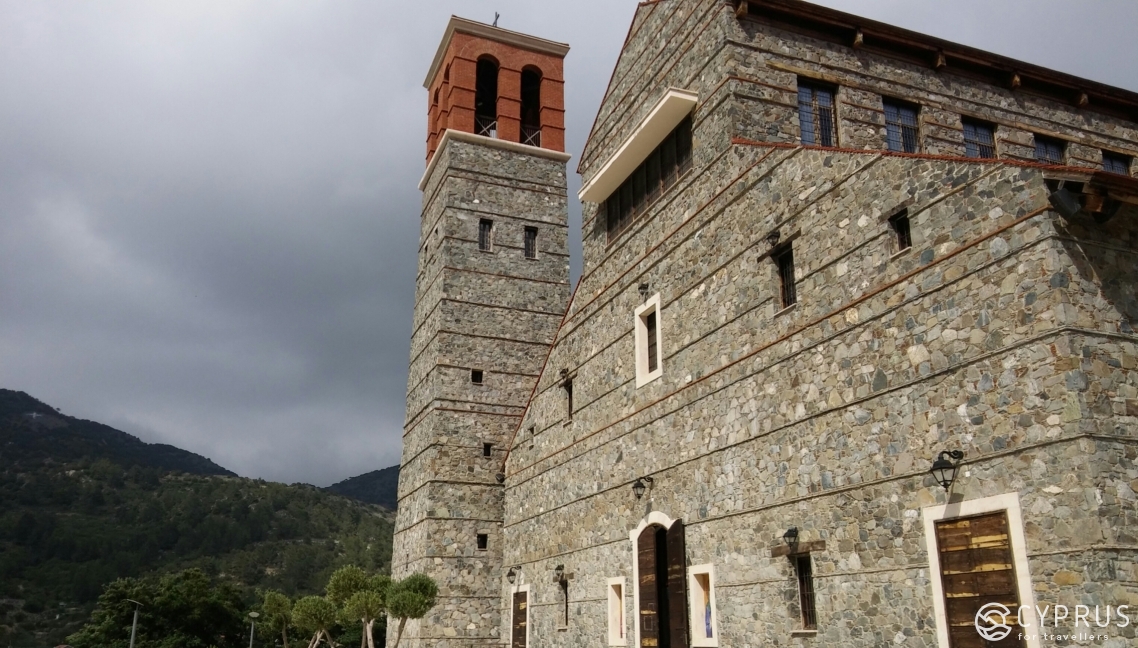
A glimpse in the history of Agios Arsenios Church
The demand of building a big church for the constantly growing community of Kyperounta was essential for several decades. The response to this was the construction of Agios Arsenios Church that had been started in March 2002 and is continued until the present day. The Church is recognized as unique architectural work in Cyprus.
It recreates a kind of an ancient basilica that was typical for the church architecture in Cyprus in the 5th and 6th centuries. Ruins of those churches can still be found in the ancient Greek city-states like Salamis, Amathus, on the territory of Akrotiri and in many other places. A floor space of the church is 1200 square meters; it had been designed to accommodate a large number of parishioners.
The spectacular bell-tower is 34 m high and the location on the top of the hill adds to the feeling like it’s touching the sky. 135 stairs inside the tower are going up to the platform on the roof with 5 bells from Epirus. The square in front of the church is a great viewpoint by itself; it’s a perfect place to admire the scenic views of the Madari (1612 m) and Paputsa (1554 m) mountain peaks and the colourful spots of villages nestled in between them.
Two chapels in the east part of the church are used for small ceremonies. The one to the North is dedicated to the Saint Philothei of Athens and the other to the South — to the Saint Eutychius of Constantinople. Both chapels are built mainly from Stavros and Georgia Nearchou family donations in memory of their younger son.
The main entrance — the gates are decorated with the mosaic on the each side: Ayia Marina (on the left side) and Agios Arsenios (on the right side). As you can tell it from its name the church is dedicated to the Saint Agios Arsenios. And it’s probably one of the most magestic churches I’ve ever visited.
And now I want to tell you about the Saint Arsenios the Cappadochian (1840-1924), a Greek monk and one of the most famous Saints of the New and the Newest time.
He was born in 1840 in the town Farasa in Asia Minor and was christened Theodoros.
A miracle happened with him in his childhood: he was crossing the river together with his elder brother when the water carried Theodoros away. His brother prayed to Saint George and he suddenly saw Theodoros next to him. He told that a horseman dressed like a monk had hauled him out of the water.
Theodoros became a monk at the age of 26 and spend 55 years in Cappadochia helping people in need and teaching children how to read and write. The Turks allowed this to him because they thought that the Saint and the children were praying at their meetings.
Later he was ordained an archimandrite and made a pilgrimage to the Holy Land. He lived mostly as a hermit and they told the power of his pray was so strong he could split the stone and heal the mad with it. The miracles he made were numerous.
He passed away at the age of 84 in Piraeus. His relics were found by ascetic Paisios of Mount Athos in October 1958.
He was canonized on the 11th of February 1986. In 2001 the part of his relics was translated to Kyperounta by the bishop Athanasios of Limassol.
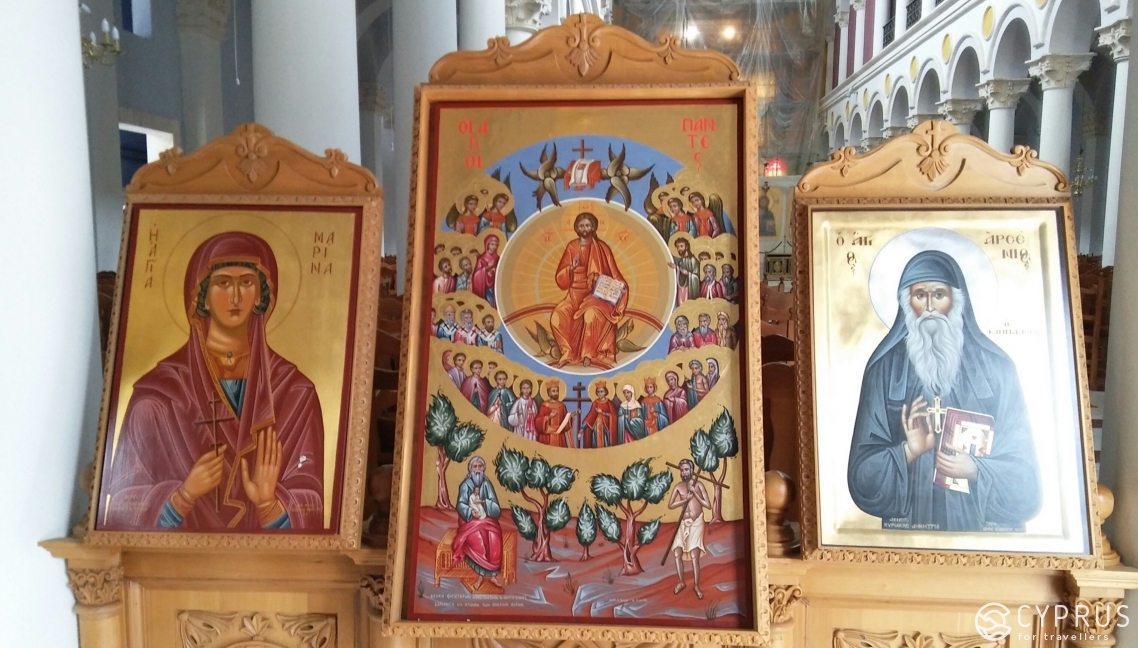
All we can do is to admire his deeds and the beauty of the church built in his honour. May we take you with us to see more of it.
The church was open during our visit but there was no service at the appropriate time. Several workers were busy with the construction of a tall iconostasis, I might say even extremely tall taking into account the size of the church. Inside it is three-church basilica with one high central nave and two lower side sections divided by 124 snow-white pillars with Corinthian capitals connected to each other by round arches.
You can freely walk all the three levels of the church using the stairs located at both sides. White carved marble (as well as its artificial analog), amazing modern and old icons, wooden gable roof with the huge ceiling joists and marvelous mosaic floor — are the true breathtaking gems of this church.
We noticed also that beyond the architectural style of the church many of its carved and decorative elements resemble different ancient styles. There is no doubt that its marble floor is a true masterpiece. Its rapport of 7 white, green and red rhombuses symbolize the 7 days of the Creation and an eighth rhombus — the day of the Apocalypse.
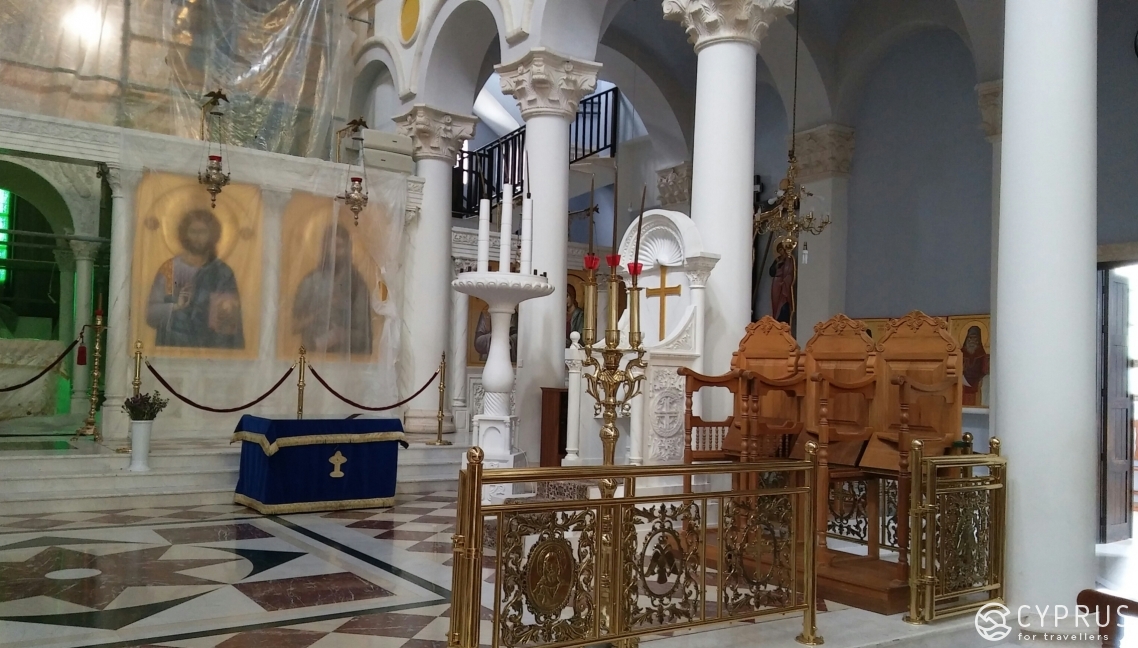
So planning your trip through Pitsilia region and its villages do not forget to add the Agios Arsenious Church as one of the stops on your route. We are sure you wouldn’t see any other church similar to it in Cyprus or anywhere else.
As I’ve said the interior was not finished at the time we were there. The medallions on the walls will be painted with murals or mosaics like those decorating the church outside.
You may not only buy all you need at the icon shop of the church but also order a service for prayers. Among other orthodox souvenirs there are also things that were brought from the Holy Land, etc.
Here is a short video for those who want to get an aerial view of this wonderful inspired by God man-made creation.
Agios Arsenios Church is marked as number 13 on the trail we started to hike during our previous trip to the Kourdali village. These places are also well known due to the history when the colonial government looked for Grivas Digenis — the leader and the idea-man of the liberation movement EOKA. There is also a memorial sign in commemoration of these events.
Now we are continuing our journey to the origins, to the heart of Kyperounta down the serpentine route E909 and turn to the right according to the road sign.
By the way if you decide to stay a bit longer at the foot of the hill of Agios Arsenios Church and drive further down the road and then turn to the right you will find another EOKA monument on the shady platform near the parking. You can also enjoy the view of the mountains, the church and the village standing under pine trees canopy or sitting on the one of the benches.
Right here on the 23d of November 1955 a famous military engagement between the Greek-Cypriots and British troops took place — the Battle of the Pine or Μάχη του Πεύκου (Mahi tou Pevkou) in Greek. The details of this battle were described in Grivas Digenis’ “Memoires of the EOKA Struggle” (Athens, 2013) and in other sources.
Grivas Digenis firstly planned the ambush on the 20th of November but then it was postponed and occurred three days later.
So at 3 pm on the 23d of November a team of EOKA guerillas ambushed a British patrol of two armoured vehicles on the road from Kyperounta to Chandria. The educational purpose of this campaign was to influence the youngest members of EOKA. The main characteristic of the great soldier at this time was the absence of any family ties. In his memoires Digenis told that at this time the British soldiers were on the lookout during their transitions through the mountains at night.
After this mission the rebels were hiding in the mountains and reunited in Spilia in the evening. They split in three groups there each of them heading to the different place: first was the main headquarter, second — the observation point and third — a safe place where the soldiers could have rest.
I would say it again, if the history of Cyprus is not the subject you are really good at, you may notice while travelling through the island and its villages that the Greek-Cypriots are very proud about this period that was defining in the history of the whole country.
The citizens of the historical regions with the help of government and voluntary organizations try to keep telling the next generations about the heroes and their patriotism and sacrifice. As the monument proves the Cypriots won’t forget also the names of the traitors whose ulterior motives and cowardly acts were the cause of many deaths of brave sons and daughters of the country.
And we are continuing our journey…
Now we are living our car at the big central car parking in the middle of the “real” historical Kyperounta. The medieval atmosphere is similar to our beloved Palaichori village.
Same picturesque wild-growing gardens and old buildings with burnt sienna roof tiles. It was a surprise that many of these houses are still inhabitant, mostly by the local old-timers. Of course, the old houses are alternating with the modern. By the way Kyperounta as well as Palaichori is quite well maintained village, where coziness, beauty and comfort even for the smallest children are very important. There are plenty of different square parks and flower gardens, several cafes and bars (Dolly and other), a good tavern-styled restaurant “Kyperia” (near the municipal car parking), small municipal terrace park with a playground “Agia Marina” etc.
While tourists, wealthy Cypriots and retired foreigners mostly love the suburbs of Kyperounta the locals choose “downtown” for living instead. The village has its own attractions [1]: few old churches: we have visited Agia Marina Church that was built in the 18th century and Panagia and Chrysosotiros Church with “tis stegis” — the pointed roof that is typical for the architectural style in Troodos. There is a medieval street renovated in “Kakopetria-style” that is familiar to agro-tourism fans in Cyprus (for those who doesn’t know what we are talking about, we invite you to join us in our journey here) and EOKA Struggle 1955-59 Museum revealing the part of the dramatic history.
Note: the old part of the village is also included to the route of the hiking trails, so you can get to many of the places we are telling you about by foot.
Small nuance: if you are planning a hiking trip in Troodos, please, keep in mind that the temperatures, especially in the evening, here are way lower than in Nicosia or in the seaside part of Cyprus. For example at the day we were in Kyperounta the temperature was not higher than 18-20 °C meanwhile in many other cities it was the heat — 29-31°C. It could be even colder because of the wind in the mountains in the evenings.
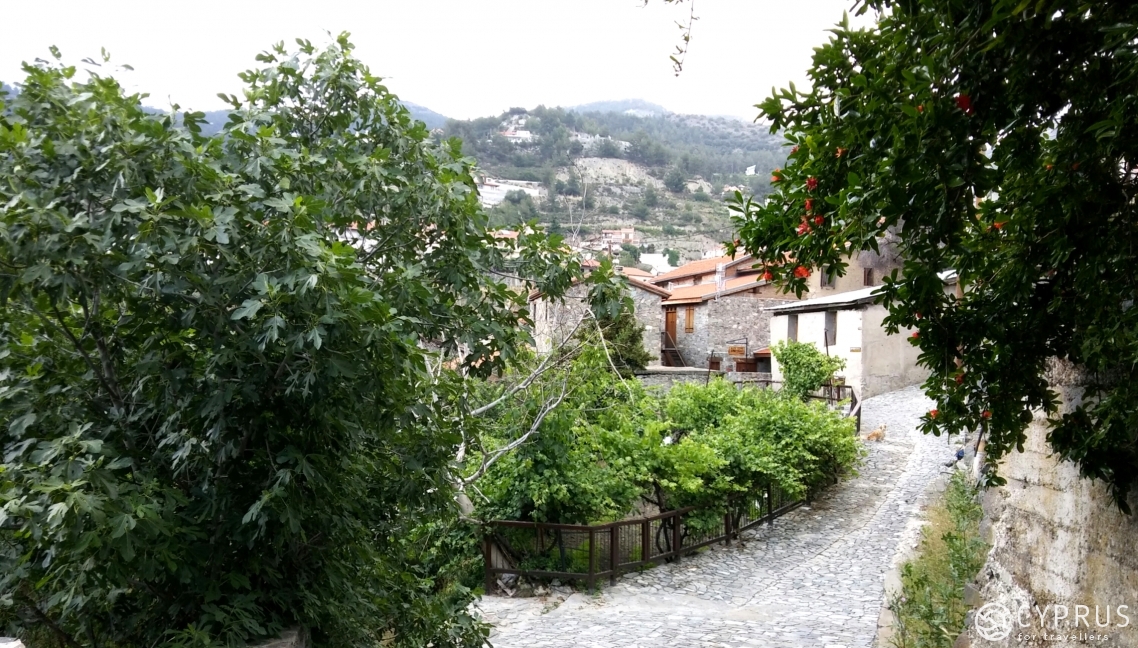
We were going through the centre of Kyperonta and now staying at the edge of the village in front of the EOKA Struggle 1955-59 Museum — the house belonged to Christodoulos Kannaouros (1908-1958) a father of 5 children and a hero who was hiding few EOKA members. The British soldiers who found these out because of the address written on the letter revealing the location of the rebels broke into the house and killed him.
The detailed interior is re-established here: the ground level was used for housing the animals, upstairs in a common room lived the family (you will see their personal belongings and the household items of that time). The secret way down was hidden beside the trapdoor, so there was a chance to get out safely.
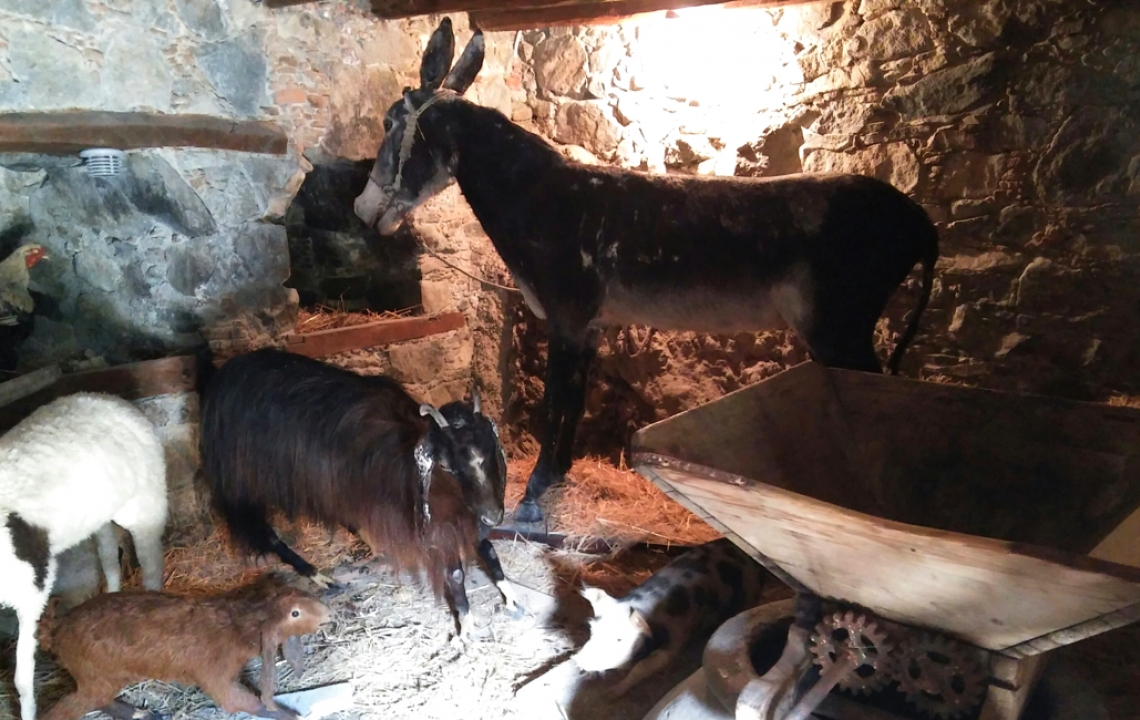
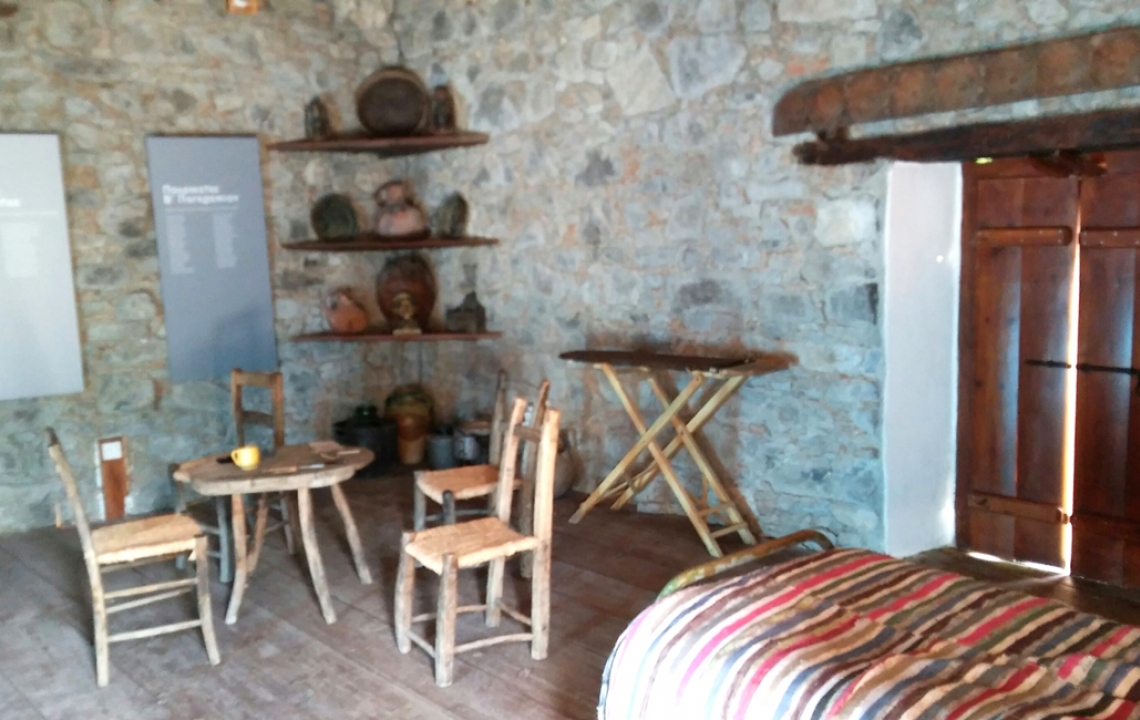
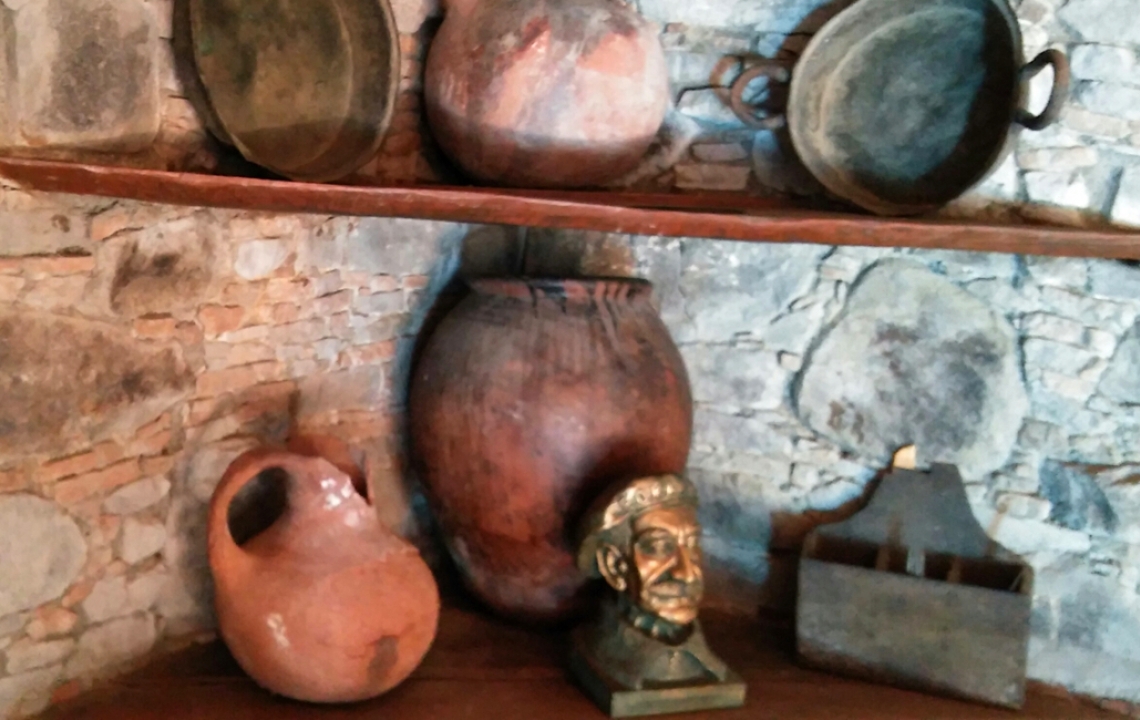
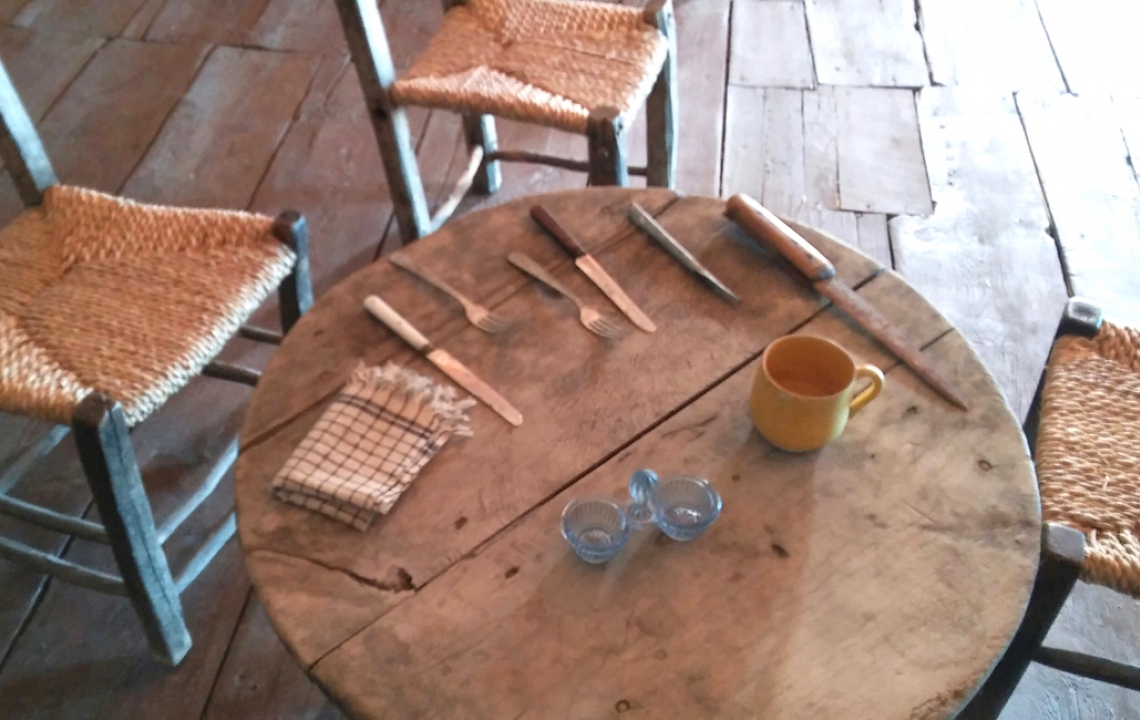
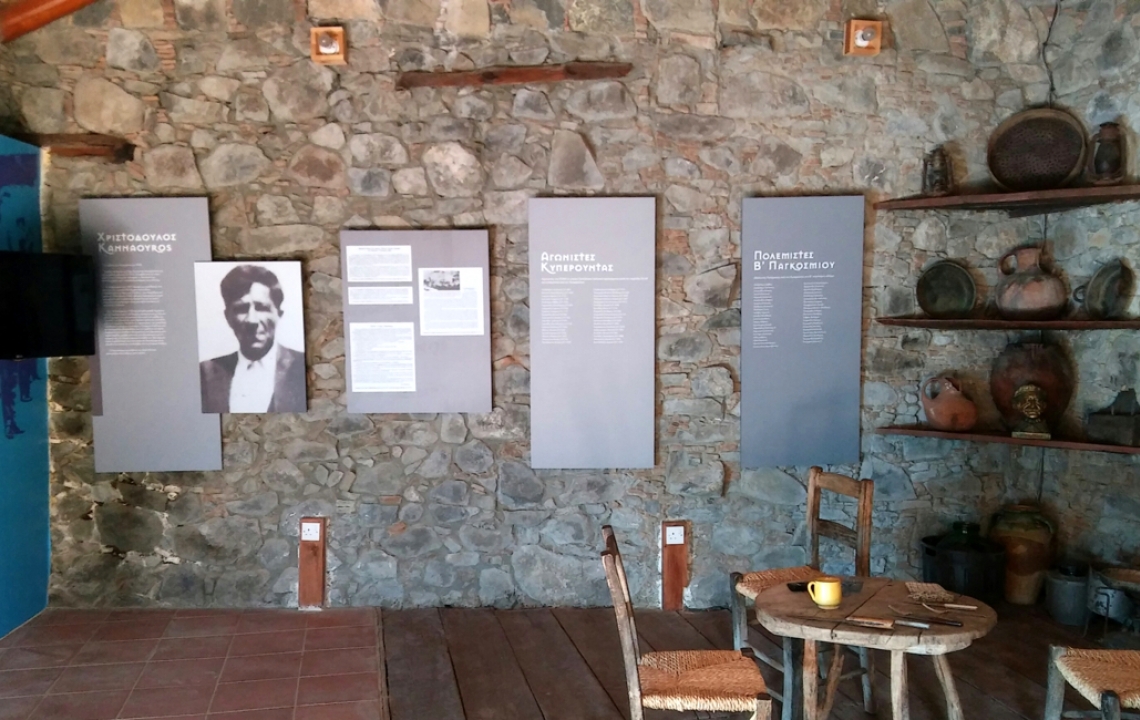
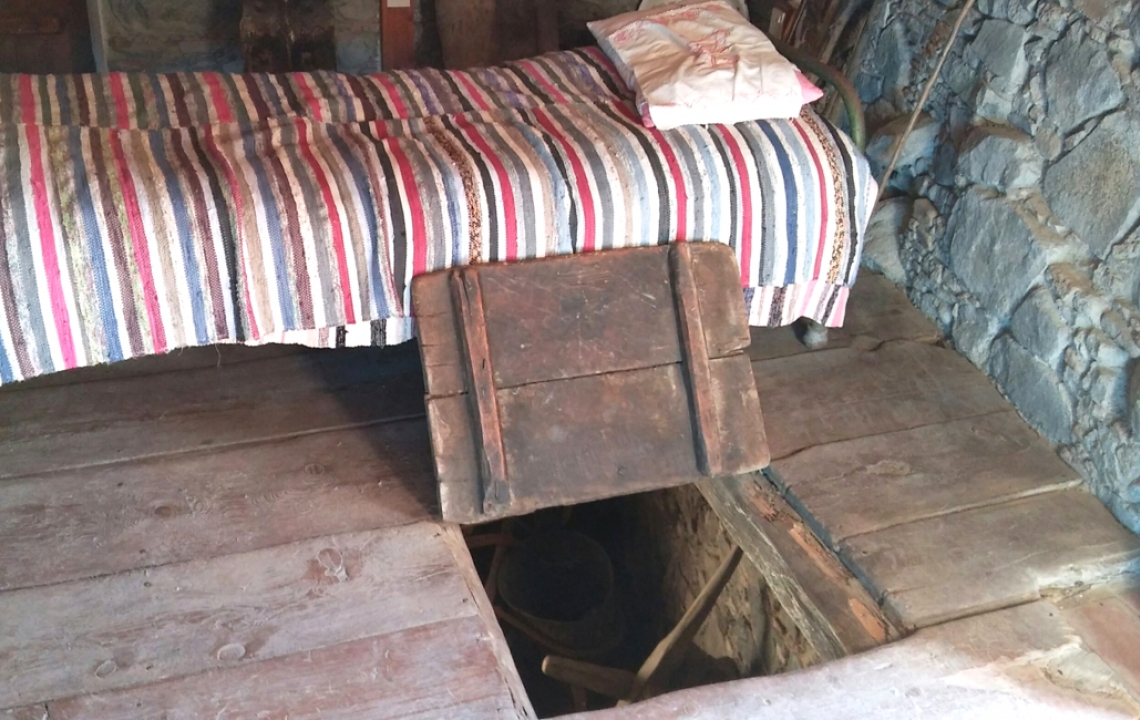
But the rebels including the hero Giorgos Kasanas were arrested and their destiny was the same as of other EOKA members at that time (for more details read about the National Struggle Museum in Nicosia).
You can also watch the film about these events that is shown on a screen between the exhibition stands (the text on them is only in Greek).
Outside the house there are old millstones made of shelly limestone and parts of a press machine made in England and used most likely for olive oil production.
What else to see in Kyperounta:
Timios Stavros tou Agiasmati Church and its museum (open since 1996). It is the oldest church in the village. It was built in 16th century. You will find the collection of icons, sacred objects and religious utensils from Kyperounta village and the region.
The church is surrounded by a small beautiful traditional garden.
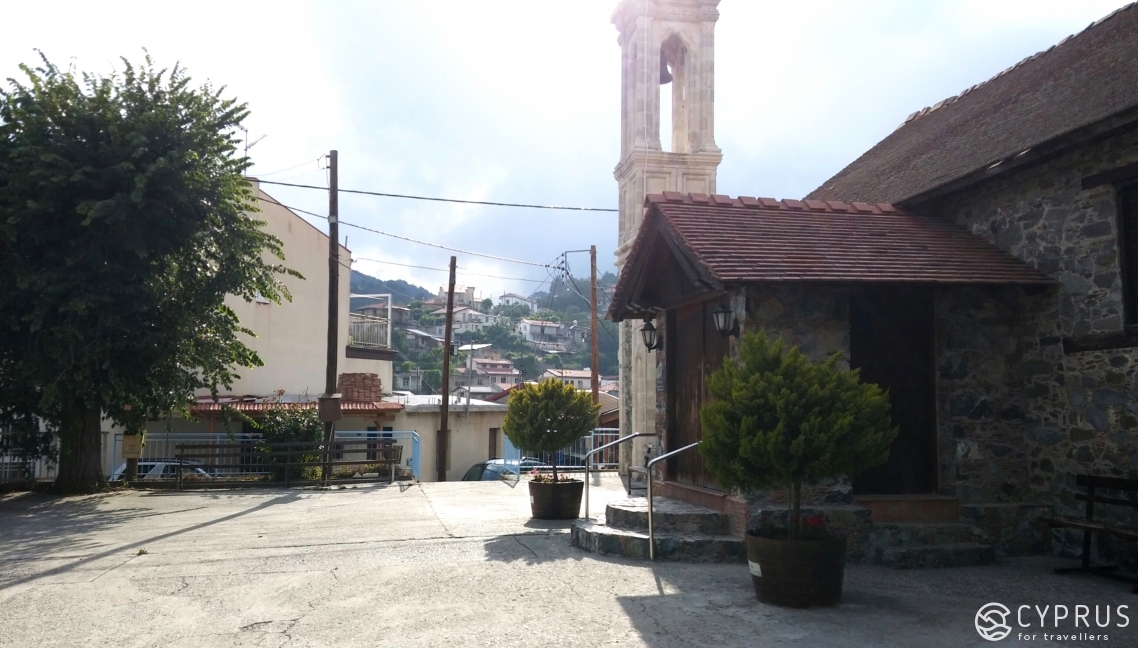
If the walks in nature do not impress you much and you are in search for something more interesting [2], we would recommend you to visit the Adventure Mountain Park.
There you will find activities for every taste. You can live on the campsite in the park and enjoy your vacations sleeping under the starry sky. The Adventure Mountain Park offers its guests the following services: paintball, archery, laser tag, rock climbing, orienteering, ice-skating, zip line and many other sport activities.
Use the opportunity to visit the local winery during your stay here — one of the biggest in Cyprus, in the heart of winemaking region. Its wine production is 400 bottles in the year.
You can read more about production of wines here.
Contact info:
Phone: +357 25 532043
Opening hours: Mon-Fri 9:00-15:30.
Kyperounta is also well known for its 23 varieties of apples the newest of them was developed in the early 2000s and it’s the only hybrid on the island — “nachi achladomila” is the hybrid of the pear and apple developed by the agronomists of Cyprus. Besides another attractions and events Kyperounta is also the main place of the apple fest organized every autumn on the second week of October.
How to get to Kyperoynta:
From Nicosia: by car — drive A9 highway to its end and then take B9 route on the Nicosias Street to the crossroad sign near Astromeritis village. After that drive on the highway to the crossroad in Karvunas and turn to the E909 route. It will take about an hour to get to Kyperounta.
From Limassol: by car on route E801 to the turn to Karvunas and there to the right, taking E909 route.
You can get the information about the bus schedule here.
Useful phone numbers in Kyperounta: +357 25 813204, +357 99 674126, +357 97 772177.
There is an opportunity to rent a house or an apartment during your stay in Kyperounta, for example by Anthos house: +357 96 547461. Another option is to stay at one of the hotels and houses near the village in Spilia-Kourdali.
The website: www.mycyprusinsider.com.
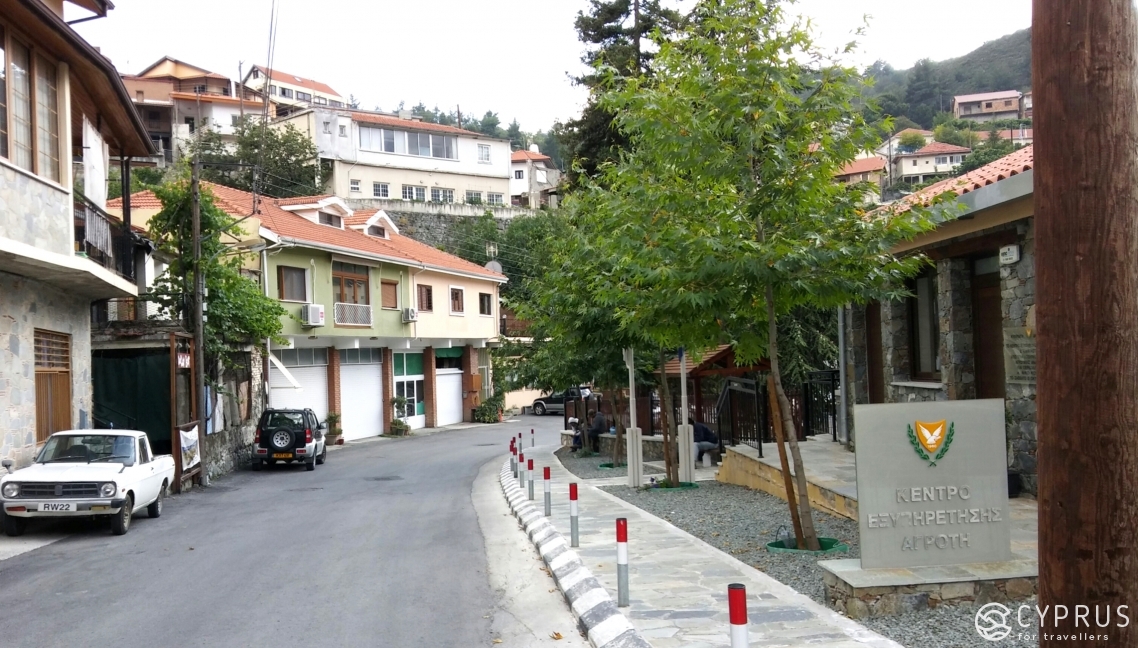
Stay with us during our next journey!
[1] The shield on the parking lot provides all the information about it.
[2] More ideas for your vacation in Troodos you can find in our article here.

